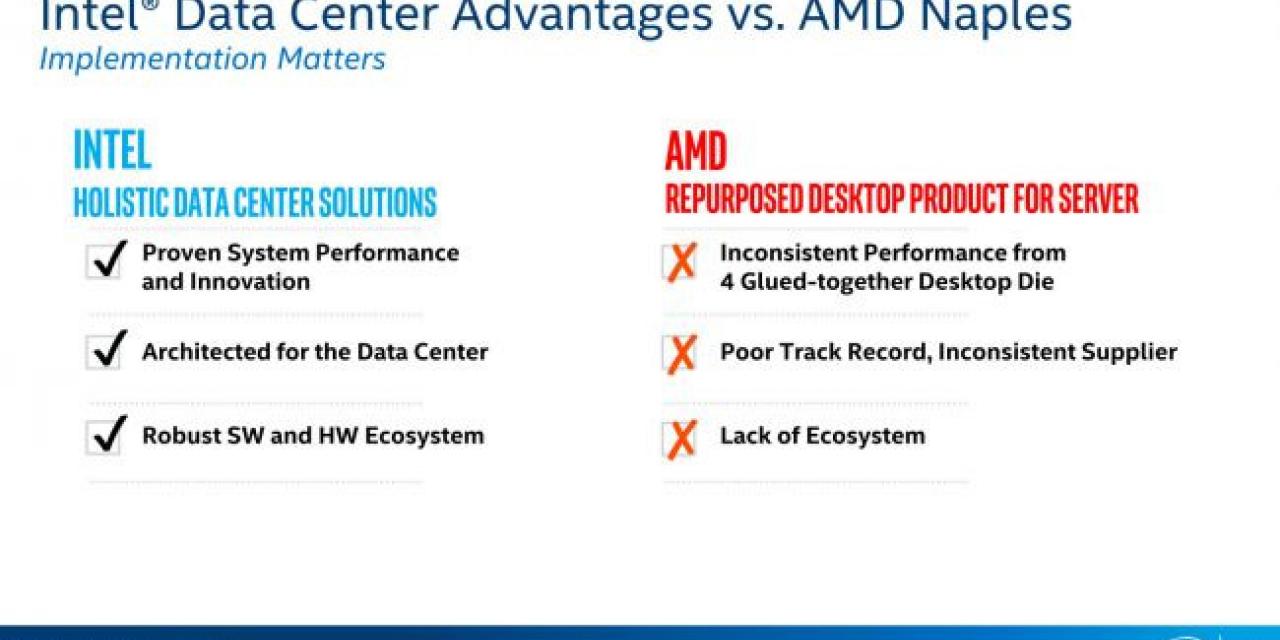
If you wondered if Intel was feeling the heat from AMD's 2017 resurgence with Zen processors and the upcoming Threadripper range, a new attack right out of the chip giant would seem to confirm it. In a slide that clearly simplifies what is an impressive new architecture from AMD, Intel claims it merely "glues-together" a number of desktop dies for its Epyc enterprise-focused chips and that the company's "poor track record" made it a poor choice of partner for companies looking to upgrade their data center hardware.
The slide Intel released is titled Intel Data Center Advantages vs. AMD Naples and claims that in Intel's "Holistic data center solutions," it has the advantage of proven system performance and innovation, architected for the data center and a robust software and hardware ecosystem.
In comparison it claims that AMD's "repurposed desktop products" have inconsistent performance due to being four glued together desktop dies, that AMD is an inconsistent supplier and has no ecosystem of its own. As TechPowerUp points out, this is a massive simplification and a deliberate bending of the truth. While AMD does leverage its desktop hardware to produce Epyc chips, the actual process of combining them is far more complicated than glueing them together and has yielded solid performance.
It also has a big advantage over Intel's hardware in terms of yield.
The lack of an "ecosystem," as Intel puts it, is actually an advantage for most consumers and companies, as it means they won't be tied in to Intel's hardware platform. AMD's chips are far more democratic in that respect.
Intel goes on in other slides to suggest that AMD's hardware requires optimizations, but that's comparing apples to oranges, because AMD's Ryzen CPUs need gaming optimizing, which aren't the chips we're talking about here.
And to top it all off, Epyc has more cores, threads and lower power requirements. AMD might be using glue, but Intel is blowing hot air.








